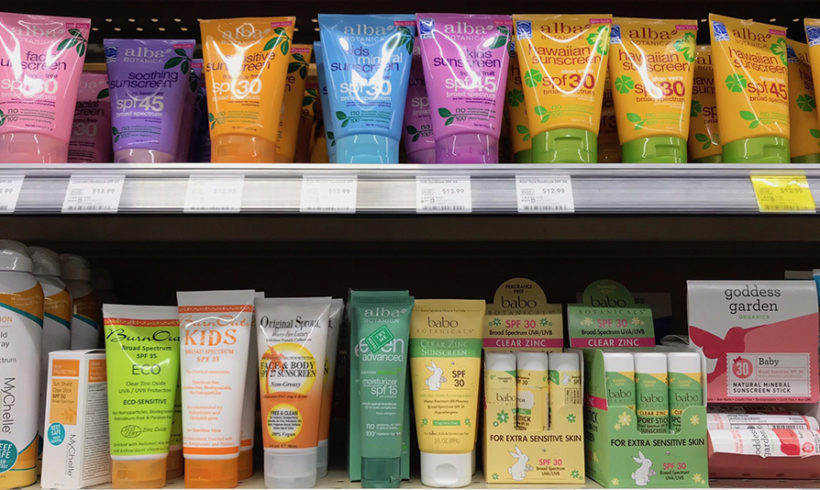
Sunscreens have been making headlines lately due to their contribution to coral bleaching and ocean acidification. Coral bleaching is the phenomenon whereby coral loses its color and rejects symbiotic organisms, essentially killing the coral. While rising sea temperatures are the main culprit behind coral bleaching, researchers believe oxybenzone, a UV blocker used in many popular sunscreens, is aiding in the destruction of coral reefs as put forth in this 2015 study: “Toxicopathological Effects of the Sunscreen UV Filter, Oxybenzone (Benzophenone-3), on Coral Planulae and Cultured Primary Cells and Its Environmental Contamination in Hawaii and the U.S. Virgin Islands.”
While the researchers focused on oxybenzone, it’s not the only ingredient in sunscreen that is harming the coral. Here are the five ingredients you need to avoid when purchasing sunscreen:
- Oxybenzone: used in over 3,500 different sunscreens worldwide
- Octinoxate: which lasts longer on the body than oxybenzone, but is used less frequently by manufacturers because it’s known to be even more dangerous to the ocean
- Octocrylene
- 4-mehtylbenzylidene: 4MBC, which is banned in the U.S., but not in Canada and parts of Europe
- Butyparaben
Zinc oxide and organic sunscreens, especially those that are 100% biodegradable, while still possibly damaging, are believed to be much better alternatives than those using the five dangerous compounds listed above.
The best choice, though, is to avoid sunscreen altogether. Instead of sunscreen, we recommend you simply cover up when swimming in the ocean. Sun protection shirts and rash guards are cool looking and do a good job of protecting the skin. Wearing a hat to the beach is always smart. Using umbrellas and tents to create shade are also excellent ways to avoid direct sunlight.
We realize, however, that covering up isn’t always practical. You came to Hawai’i to play in the sunshine! The non-profit, non-partisan Environmental Working Group (EWG) has a fantastic Sunscreen 101 guide that lists over 250 reef-safe sunscreens, including the best kid-friendly ones. They’ve even built a little Amazon store so you can purchase these products online. Additionally, there are a few locally made, reef-friendly sunscreens. Three examples are Raw Love, SolKine and Mama Kuleana.
On Maui, reef-healthy(er) sunscreens can be found at health food stores (such as Hawaiian Moons in Kihei, or Whole Foods in Kahului), as well as surf shops. Be sure to carefully read the active ingredients listed on the bottle because some manufacturers will say they are “reef-friendly,” but then go ahead and use harmful ingredients. Again, avoid the five dangerous ingredients listed above, and you’ll be doing your part to help save the coral reef.
The Hawai’i state legislature attempted to ban oxybenzone from our waters, but the bill stalled on the last day of the 2017 session. State lawmakers are already working to pass the bill in 2018. If it passes, Hawai’i will become the first state in the union to ban oxybenzone.
